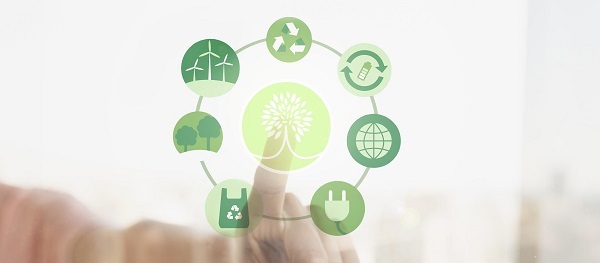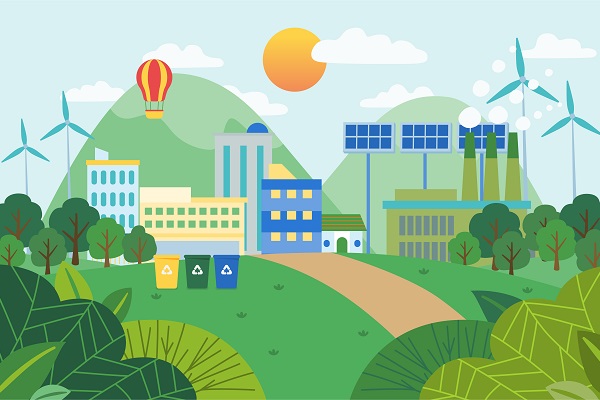
Released on National Recycling Day (November 15), the Environmental Protection Agency's (EPA) Recycling Initiative marks the first recycling strategy of its kind for America.*
Devised to combat recycling challenges, address climate change, and reduce the climate impacts attached to waste management, the strategy seeks to create a ‘stronger, more resilient, and cost-effective municipal solid waste recycling system.'*
So, what is it?
The National Recycling Strategy is the first part of the EPA’s drive to create a circular economy.

Focusing on improving and progressing the national municipal solid waste recycling system, the strategy reflects the work of companies, organizations, public stakeholders, local governments, tribes, and many others.*
Why is it important?
Implementing a recycling strategy that builds towards a circular economy will help tackle climate change, create sustainable practices for resource consumption and material generation and minimize waste.
What is a circular economy?
A circular economy extends the life cycle of materials by implementing restorative and regenerative practices to industrial processes and economic activities.*

Through such, it seeks to enable materials to exist in circulation for longer periods, which eliminates waste and reduces resource use.
What are the challenges of the current recycling system?
The EPA identifies several challenges faced by the American recycling system.
- Insufficient markets for recycled materials,
- Inadequate recycling infrastructure,
- Absence of recycling education to reduce the confusion around recycling,
- Lack of consistent methodology when measuring recycling system performance.*
What are the main objectives?
The National Recycling Initiative works in correlation with the National Recycling Goal to increase America’s recycling rate to 50% by the end of the decade. However, to achieve this and to rectify the challenges identified, the EPA has set out five main objectives:
- To improve the markets for recycled materials,
- Improve recycling infrastructure and increase collections,
- Decrease the tendency of cross-contamination when recycling,
- Improve recycling policies,
- Create a standard measurement method and increase data collection.*
How will the initiative achieve its objectives?
Over the coming months, the EPA will collaborate with stakeholders to identify the best method to implement the recycling strategy. To achieve its objectives, the EPA’s National Recycling Initiative will utilize the funding provided by the Bipartisan Infrastructure Law.*
What is the EPA & The Bipartisan Infrastructure Law?
The EPA & Bipartisan Infrastructure Law provides funding to enhance national infrastructure, improve health and safety and climate resilience, and create jobs.

Allocating $350 million for Solid Waste and Recycling grants and an additional $25 million for battery recycling, the Bipartisan Infrastructure Law seeks to transform waste management in the United States, create jobs, enhance battery recycling programs, and educate people on the safe handling of used batteries.*
To help with this, we’ve compiled an FAQ on The Benefits of Battery Recycling.
What happens next?
In conjunction with the National Recycling Initiative, over the coming years, the EPA aims to hone its efforts to support the building of a circular economy approach to waste and the management of materials.

With an aspiration to lessen resource intensity when manufacturing products, minimize material use, and repurpose materials to improve the life-cycle of products, the EPA’s strategy marks the agency’s dedication to addressing climate change, the need for recycling and sustainability, and the correlation between the two.
What can we do to help?
Implementing a well-organized recycling program is key to helping achieve the EPA’s recycling initiative. Not only will it help increase recycling rates, but the use of clear decals and signage, and suitable recycling containers can decrease the possibility of cross-contamination while recycling.
For guidance on starting a successful recycling initiative, see our latest eBook: The Guide to Creating a Successful Recycling Program. To discover the benefits and processes of reducing cross-contamination, read our FAQ: How to reduce cross-contamination when recycling.
Resources:
EPA & The Bipartisan Infrastructure Law Fact Sheet
EPA National Recycling Strategy
How to reduce cross-contamination when recycling
The Guide to Creating a Successful Recycling Program
The Basics of Battery Recycling
References:
*https://www.washingtonpost.com/climate-solutions/2021/11/15/epa-national-recycling-strategy-plastics/
*https://www.epa.gov/newsreleases/epa-releases-bold-national-strategy-transform-recycling-america
*https://www.epa.gov/recyclingstrategy/strategies-building-circular-economy-all
*https://www.epa.gov/recyclingstrategy/strategies-building-circular-economy-all
*https://www.epa.gov/newsreleases/epa-releases-bold-national-strategy-transform-recycling-america
*https://www.epa.gov/recyclingstrategy/strategies-building-circular-economy-all
*https://www.epa.gov/newsreleases/epa-releases-bold-national-strategy-transform-recycling-america
*https://www.epa.gov/infrastructure/fact-sheet-epa-bipartisan-infrastructure-law




